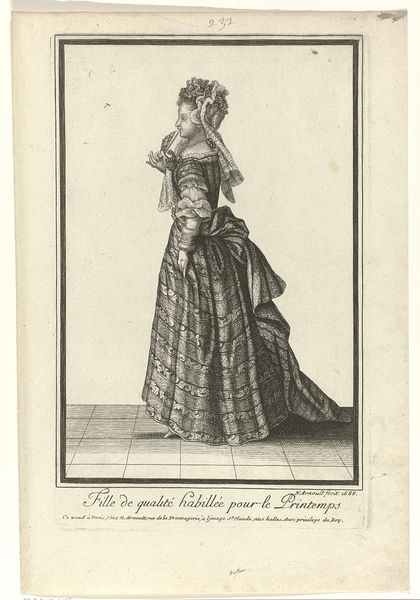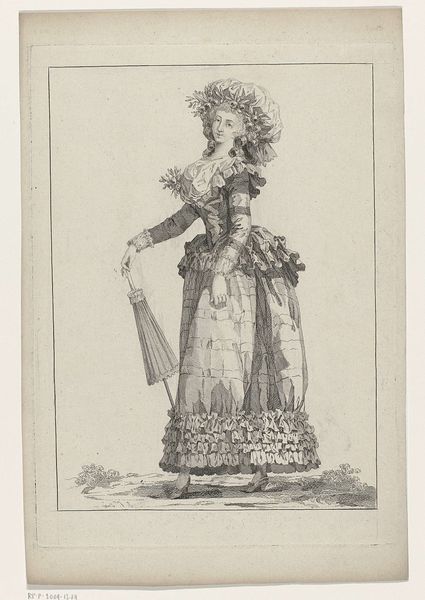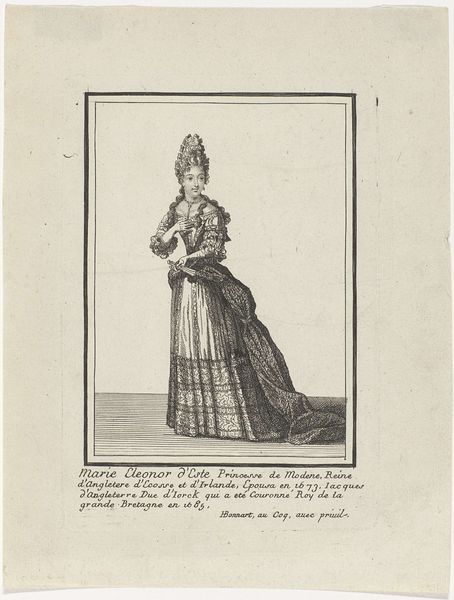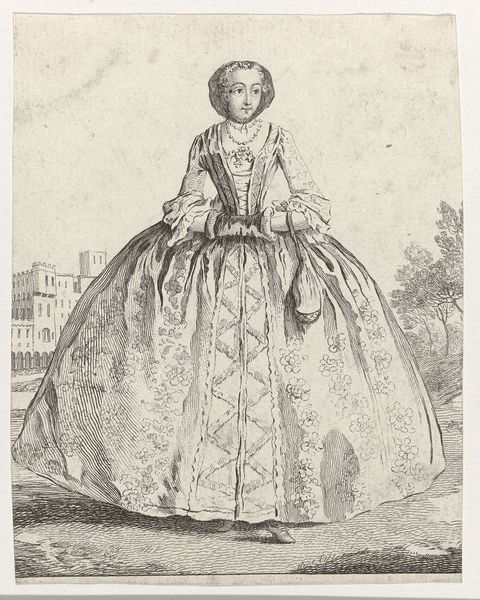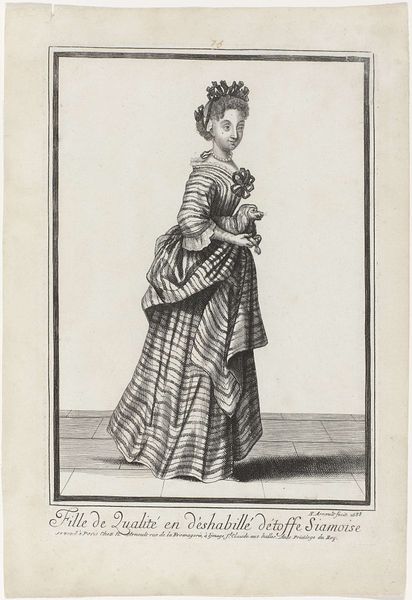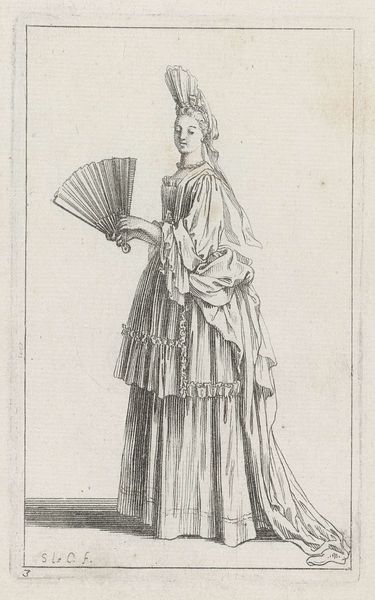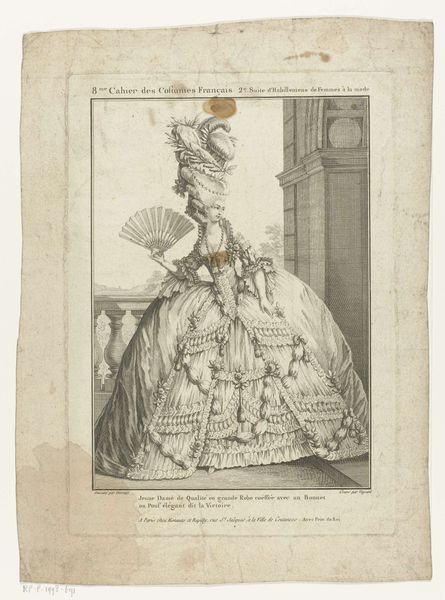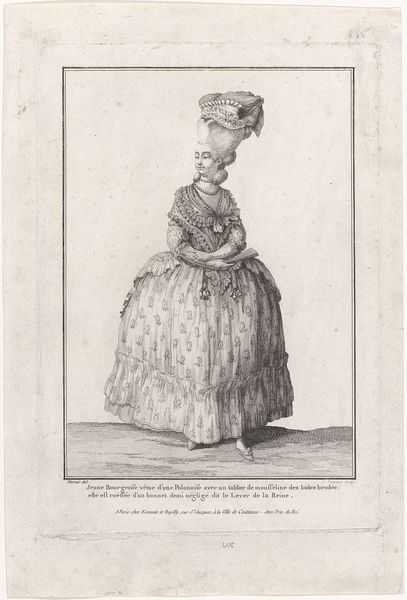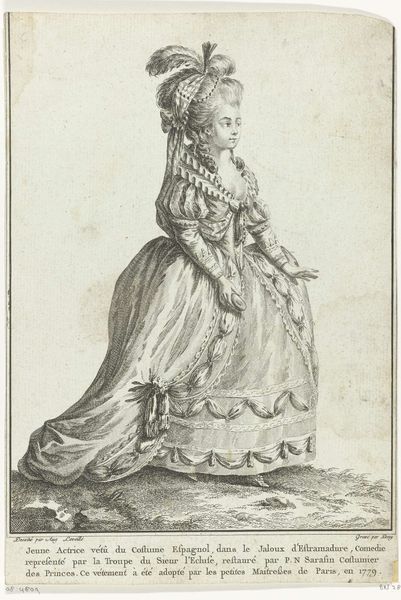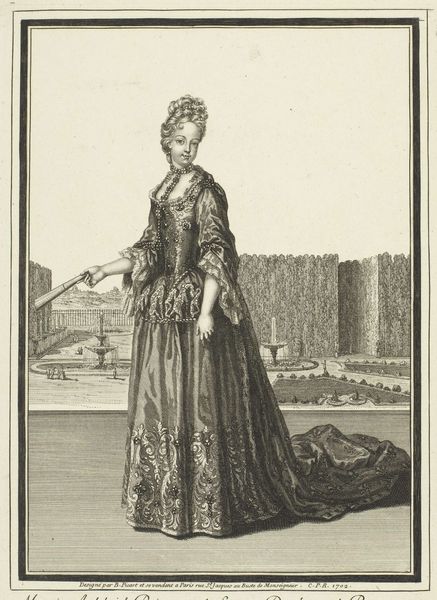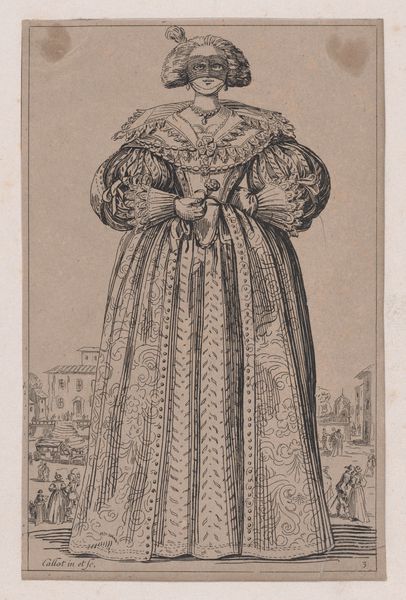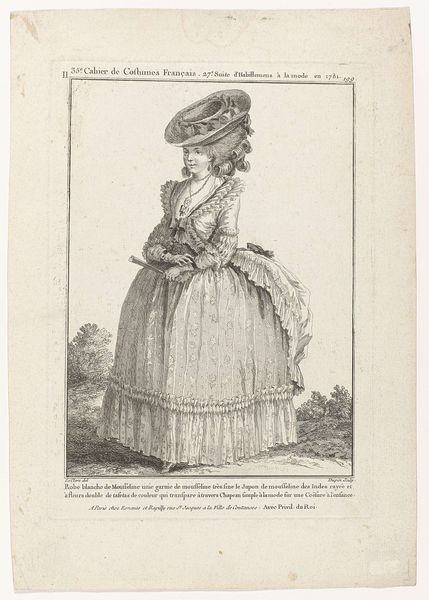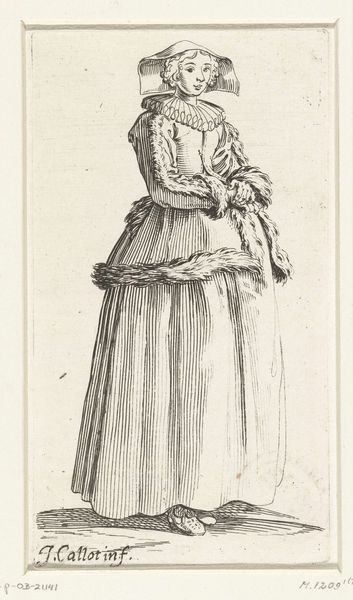
Dimensions: height mm, width mm
Copyright: Rijks Museum: Open Domain
Editor: We’re looking at “Dame de Qualité en Echarpe,” a 1706 engraving by Bernard Picart, currently held at the Rijksmuseum. I'm struck by the elaborate, almost excessive detail in her dress. What’s your take on it? Curator: I find it interesting to consider how such a print embodies a whole system of production and consumption. We see the final, seemingly effortless image of elegance, but the dress itself speaks to the extensive labor involved in textile creation, sewing, and the societal expectation of aristocratic display. Editor: That's interesting. So, it's not just a portrait, but a snapshot of manufacturing and class? Curator: Precisely. The material reality of the dress, meticulously rendered through the engraving process, highlights the resources—both human and material—necessary for such garments to exist. Consider, for example, the specific technical skills of the engraver Picart, as indicated in the lettering itself “Dessiné et Gravé par Bern.” The artist had to have skills, and access to proper tools and materials. And how does that skill become the portrait we see? Editor: Right, all that effort compressed into what seems like a simple image. Were these types of prints common? Curator: Very. They facilitated the dissemination of fashion and, therefore, the demand for certain textiles and styles, perpetuating a cycle of production and consumption that directly benefitted the ruling class. It also provided a certain insight for other socioeconomic groups of how the aristocracy lived and dressed. It also had its practical functions for tailors to be inspired from it! Editor: That makes me look at it so differently. It's almost like propaganda, showcasing and encouraging this culture of excess through accessible media. Curator: Exactly! And it's worth noting how the controlled distribution of such images, “avec Privilege du Roi”, ensured the continued power of the monarchy in shaping these material realities. It highlights a complete network. Editor: It’s amazing how much context can be gleaned from a single image when you think about the materials and production behind it. Curator: Absolutely. Examining art through the lens of material production opens up fascinating insights into social structures and historical forces.
Comments
No comments
Be the first to comment and join the conversation on the ultimate creative platform.
